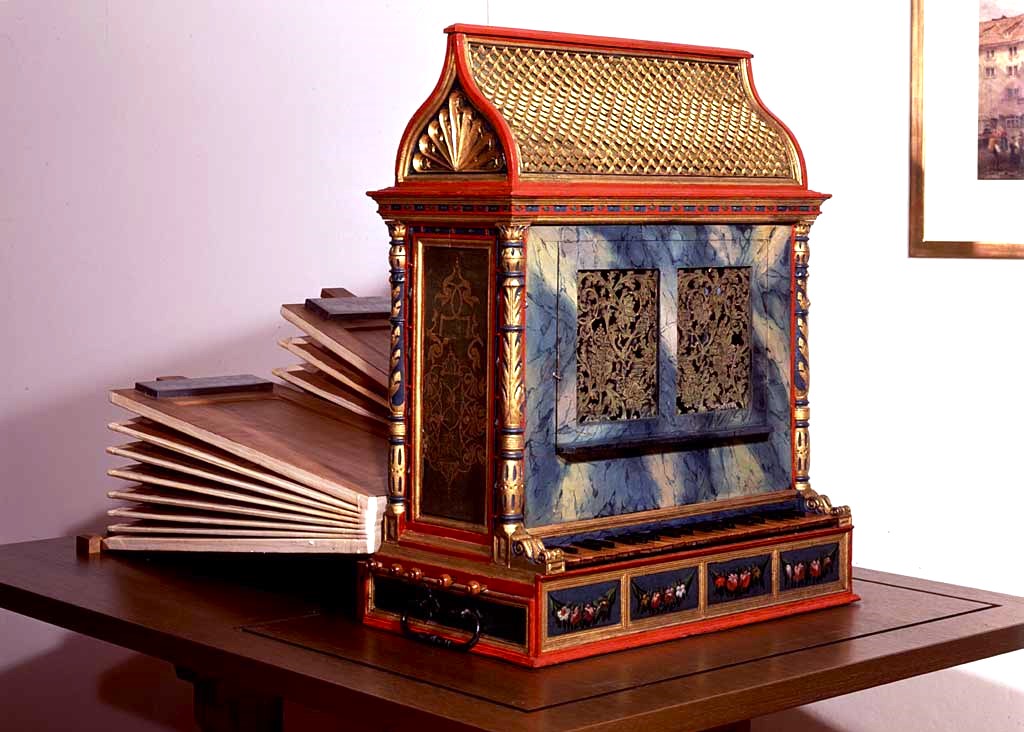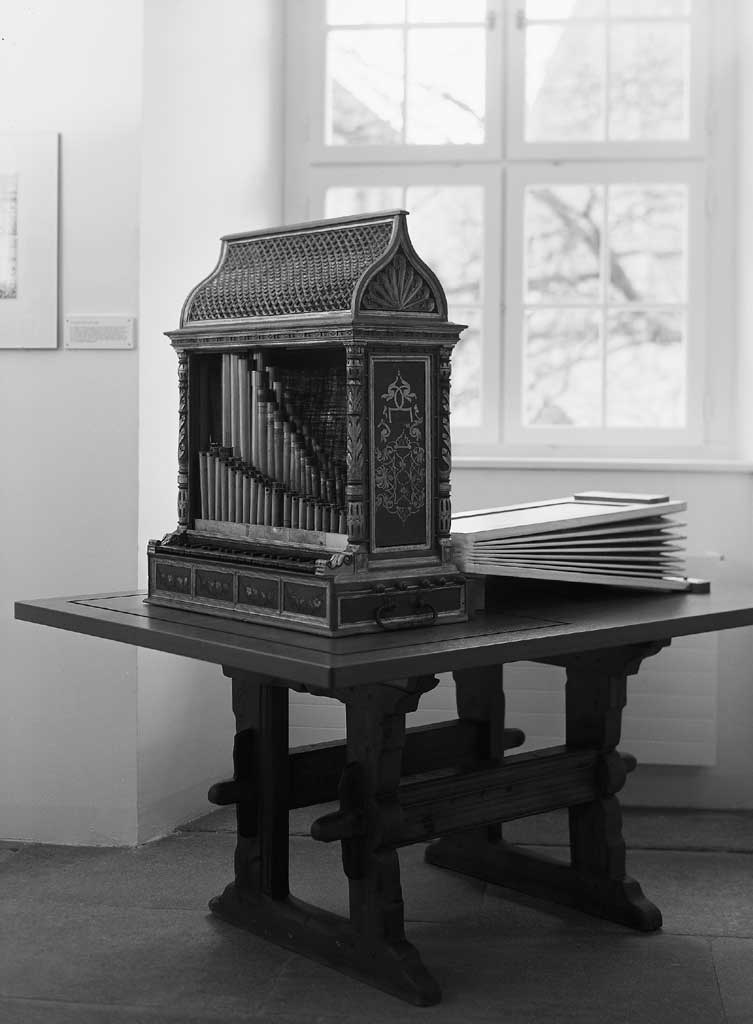Chur, Rätisches Museum
| Builder | Anonymous |
|---|---|
| Year | ca. 1550 |
| Period/Style | Renaissance |
| Stops | 4 |
| Keyboards | 1 |
| Keyaction | tracker/mechanical |
Since 1982, the Rätisches Museum in Chur houses a valuable small table organ, a gift from the Valär family of Jenaz, Graubünden. This instrument is a rare type known as a Baldachin organ. Its distinctive feature is the direct sticker action of the keyboard on the wind chest, resulting in a pipe arrangement that exactly matches the keyboard layout, giving the pipes a panpipe-like, asymmetrical appearance. Gothic positives often displayed an asymmetrical pipe facade, as seen in the Ghent Altarpiece by the van Eyck brothers around 1430. However, during the Renaissance in the 16th and 17th centuries, there was a demand for symmetrical designs. As a result, these asymmetrical positives were encased in symmetrical housings without visible front pipes, with sound exits carved into the housing and covered with fabric. The term Baldachin organ was coined around 1960 for this short-lived type. Eventually, organ builders learned to create symmetrical pipe facades for these positives, leading to the quick disappearance of the prospect-less Baldachin organ.
According to Willi Lippuner, it is likely that this particular Baldachin organ once served as a processional organ for the Chur Cathedral, probably made in the 16th or early 17th century. It was last used in the Corpus Christi procession of 1843 before being sold. Later, it became a household organ for the family and descendants of Pastor Ulrich Valär-Conrad (1819-1882) in Jenaz. The restoration carried out between 1984 and 1986 aimed to restore its original state as much as possible. While the technical and musical aspects were restored to reflect the Renaissance period, the baroque modifications from the 18th century were preserved in the case and finish. Notably, the organ retains its original short-resonator reed stop (Regal 8'), a feature often lost in other Baldachin organs. The restoration did not include the reconstruction of the ornamental pipework on the housing roof due to a lack of reference points for its design.
According to Willi Lippuner, it is likely that this particular Baldachin organ once served as a processional organ for the Chur Cathedral, probably made in the 16th or early 17th century. It was last used in the Corpus Christi procession of 1843 before being sold. Later, it became a household organ for the family and descendants of Pastor Ulrich Valär-Conrad (1819-1882) in Jenaz. The restoration carried out between 1984 and 1986 aimed to restore its original state as much as possible. While the technical and musical aspects were restored to reflect the Renaissance period, the baroque modifications from the 18th century were preserved in the case and finish. Notably, the organ retains its original short-resonator reed stop (Regal 8'), a feature often lost in other Baldachin organs. The restoration did not include the reconstruction of the ornamental pipework on the housing roof due to a lack of reference points for its design.
| Manual |
|---|
| Regal 8' |
| Gedackt 4' |
| Gedackt 2' |
| Octave 1' |
No Video/Audio samples available.
https://www.orgelbau.ch/de/orgel-details/800750.html
 Pipe Organ Map
Pipe Organ Map
